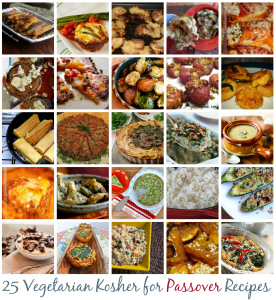
Earlier this week, I shared my advice to carve out a separate budget for Passover within your family’s March household expenses.
But what if your budget doesn’t have enough wiggle room to set aside an extra $200 or more this month?
Instead of trying to cash flow big expenses — such as your Passover bills — in just one month, you can also save up for those expenses year-round.
One way to do this is to set up sink-funds. I’ve talked about sink funds extensively, as I think they are one of the lynchpins to making our budget work.
We save a set amount of money each month for expected annual expenses — everything from renewing our car’s title & license to home repairs to summer camp. We put this money into a separate savings account, so that when bill comes due, we just transfer the money to our checking account and write a check!
The sink fund principle applies seamlessly to saving for Passover and Rosh Hashana/Sukkot.
I realize it doesn’t help much now, since Passover is in 3.5 weeks, but if you find yourself struggling to come up with the extra cash for your sederim, please consider putting a sink fund plan in place now to cover your costs for the fall chagim.
It’s a lot less painful to save $20 or $50 each month than it is to come up with several hundred dollars in one month.
I’ve also had readers tell me that they designate “found” money to their Pesach budget. This might include tax returns, bonuses from work, extra money from small/odd jobs, garage sale revenues, etc.
I also heard this clever idea from a dear friend of mine:
I thought I’d share with you how we handle the extra expense. I make no claims that it’s the best system but it seems to work for us.
Our regular grocery budget is $X per month. We take that money out of the ATM in cash and once it’s gone, we are done buying groceries. But I make a game of it and try to see how much I can have leftover at the end of a month. The extra goes into a tin and we start with a fresh $X at the beginning of the month.
When Passover rolls around we use the money in the tin in addition to our regular grocery budget and that takes care of it! Its amazing how it adds up and we don’t even miss it. Plus it doesn’t change our budget. I hate extra paper so this eliminates wading through receipts.
This is the second Passover that we will be shopping for using our “leftover” money and I can say that it has worked out great. We are planning to keep doing it.
Let’s talk about it: If you aren’t cash-flowing your Passover costs this year, how do you save up?










When my children were in elementary school, I was a single parent so where I went, they went. That included the grocery store. I would allot each child (two) one meal’s worth of money, usually $5-10. I would hand it to each child and they would pick which dinner meal they would be responsible for buying. The only guidelines were that it had to include a source of protein and it had to be palatable to everyone. The bonus for them was that they got to keep the change. They LOVED this ‘game’ and couldn’t wait to go shopping with me every week. The bonus for me: We had some interesting meals, it took the pressure off of me for creating meals my kids would enjoy, we stayed in budget without complaints of “i don’t like that” and the biggest bonus was that my children learned how to plan meals and budget! And they usually wanted to help prepare the meals they purchased. I highly recommend this ‘game’ to anyone with children …… we started around four years old with single items but were up to full meal planning by first grade. What an independence builder!